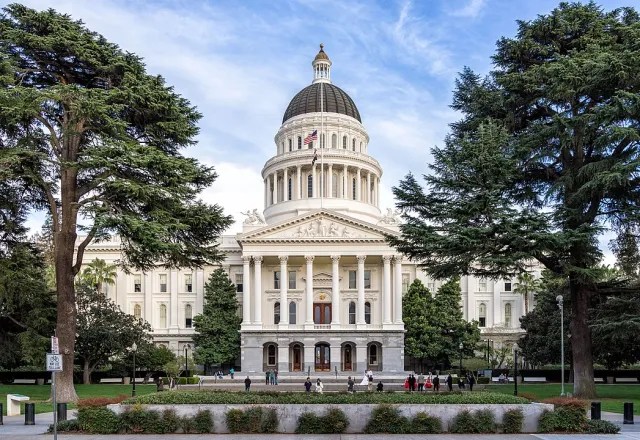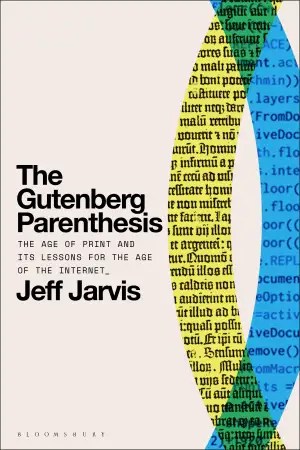
It is as if the editorial department at The Washington Post woke up one morning asking, in headlines I will quote below, “What are we doing wrong?”
I will start by trying to answer the question for them, The New York Times, CNN, and the rest of incumbent journalism:
You have refused to recognize fascism at the door. You insist on covering authoritarianism as just another side in still-symmetrical American politics.
You do not read history. For God’s sake, reread or read Hannah Arendt’s The Origins of Totalitarianism (or at least listen to the podcast). You fail to cite history for your readers, explaining the context of what is occurring, because you insist on thinking you are writing your “first draft of history.” What hubris.
You think, as is often said, that our problem is disinformation and since you are in the information business, you must be the solution. Arendt teaches instead that “totalitarian government … bases itself on loneliness, on the experience of not belonging to the world at all, which is among the most radical and desperate experiences of man.” By this, she does not mean the insipid “loneliness epidemic” you and the Surgeon General prattle on about: incels unable to get laid. She means isolating people from their communities through unfounded fear, making them vulnerable to the siren call of race hatred. That is Springfield.
You let yourselves be exploited by these malign forces to spread their bigotry and bile, cushioned with your white-gloved euphemisms and sane-washing. You do not explain blood libel to your readers. Is that because you do not recognize it yourself?
You quote their noxious words, taking them at face value — as beliefs, as “alternative facts” — unable to see how they are instead saying these things to signal their belonging to the cult and cause. The call-and-response of Trump and Vance and their mob is the authoritarian ruler’s loyalty test. Arendt observed in Nazi Germany and the Stalinist Soviet Union “such unexpected and unpredicted phenomena as the radical loss of self-interest, the cynical or bored indifference in the face of death or other personal catastrophes, the passionate inclination toward the most abstract notions as guides for life, and the general contempt for even the most obvious rules of common sense.” Guns, abortion, immigration, and trans rights cannot be the central guideposts in the everyday lives of these people; they are flags to fly. In your quotation and coverage, you salute them.
You hide behind your impotent fact-checking, never seeing — though frequently warned — that in the ways you debunk their lies, you spread them, and by pedantically nitpicking the other side in your misguided search for balance you create false equivalence. This is how they exploit you.
You thus lie to yourselves and the public you serve by refusing to call lies lies, racism racism, misogyny misogyny, authoritarianism authoritarianism, fascism fascism.
Before I examine your all-too-recent efforts to understand what you are doing wrong, let me offer two counter examples of wise journalism.
When Russia invaded Ukraine, the Helsingen Sanomat, reporting to a nation vitally concerned about the aggression of its neighbor, quoted historians atop its home page to provide context. You should be reaching out to historians, anthropologists, sociologists, and scholars who study ethics, media studies, communication, and rhetoric to explain to you and the public what is occurring. You are not yourself expert.
When Trump and Vance’s hate directed at Haitians in Springfield became memes, The Times��� Jamelle Bouie took to TikTok to explain — as he often does there — what is actually happening. Please take two minutes and forty-two seconds to watch.
I am glad to see the Post’s columnists begin self-reflection on their — and my — field’s coverage of this time. Here, Matt Bai recognizes how ineffectual modifiers are in front of Trump’s lies. That seems a good start.

“And by now,” Bai writes, “it seems tragically obvious to me that, by constantly holding Trump to a different standard of proof than we do anyone else, we in the news media are actually making him less accountable for his mendacity, rather than more so….
“Here’s the dilemma. The news media can’t credulously publish things we know to be untrue — and yet, if the president says them, we can’t exactly not publish them, either. At the same time, we find ourselves pressured by critics on social media for whom no level of scrutiny, when it comes to Trump, will ever be enough.”
Bai’s odd argument is that because Trump is a pathological liar, he is held to a different standard of truth, and journalists are expected — by “a bunch of preening media critics” — to subject him to “this policy of hyper-skepticism,” demanding that he provide evidence, for example, in blaming Democrats for assassination attempts against him. Bai asks: “Must a candidate walk around all day with an armful of data to back up every assertion? Is there really no room to advance a controversial and speculative argument without producing slides to support it?”
So he begins by reflecting on the ineffectiveness of journalism’s strategy of adjectival caveats to hateful lies but ends by justifying Trump’s incendiary assertion that Democrats’ assertion that he is a threat to democracy is what is incendiary. He argues that “our need to append qualifiers to everything he says is making us look like we’re out to discredit him. In other words, we appear to be proving Trump’s entire point not just about the news media but about the nation’s elite institutions as a whole. Rather than reinforcing trust in news coverage, I fear we’re further eroding it.”
So what then? Let him skate? Or — here comes the predictable journalistic reflex — do unto Harris as is done unto Trump. Bai tries to apply the same level of scrutiny to Harris and Biden, ending up in just one more journalistic exercise in bothsidesing.
Sigh.
Next, here is Catherine Rampell positing her theory of what she calls idiotception, “a self-perpetuating, IQ-destroying cycle: Politicians hear or invent a stupid lie, which they plant in the minds of their followers. Their followers then repeat that stupid lie back to those same politicians. Then, the politicians insist they have no choice but to act on the stupid lie. After all, the public demands it!”

She tracks the Springfield lie, free of context, not recognizing what is underneath it: the blood libel Bouie identifies and explains. Then, just like her colleague, her knees jerk and she, too, ends up bothsidesing: “To be clear, the idiotception cycle is not unique to Republican politicians, even if they’ve been particularly aggressive adopters.”
This is the same Post columnist who, before Harris announced her economic policies, accused her of being a communist price fixer and, when that turned out to be false, refused to correct herself and called Harris’ actual policy “silly.”
Rampell concludes: “Dumb, baseless stories floated by randos have always had the ability to gain followers. But in today’s media environment, they can spread and strengthen astonishingly quickly, particularly when they serve the agendas of manipulative, morally malleable politicians.” And columnists.
Growl.
The Post doesn’t fact-check its columnists, but it certainly fact-checks the candidates in an exercise in over-eager and in the end useless pedantry that has lately jumped the shark. Here is resident fact-checker Glenn Kessler on J.D. Vance’s pet-eating “misinformation.”

Kessler dutifully quotes every Vance statement at length and then pulls the threads of his ugly sweater one at a time until he ends bare-chested. But once more, Kessler does not provide the context that matters. It barely matters what lie Vance and Trump use as the vector of their hate. The pets aren’t the point. It is blood libel. That is left unsaid.
Damn.
There are exceptions. Many a day, Jennifer Rubin is to The Post as Jamelle Bouie is to The Times: welcome relief. Ruth Marcus, too, is better than most. But even she finds herself trapped, callingSarah Sanders’ awful attack on Harris “a new low for the GOP.” Problem is, it’s hard to get lower than fascist, authoritarian, racist, misogynistic, lying, hateful insurrection.

How much better it would be to instead offer readers an ongoing narrative identifying fascism and blood libel as it occurs and pointing to all such instances as further evidence in explanation.
That is what old journalism is doing wrong.
Meanwhile, how are things up the Acela at The Times? As awful as ever.

J.D. Vance’s fascism is “combative conservativism” and his blood libel against Haitians — and, by extension, all immigrants and people of color in America —is “ultra-online political rabble rousing.”
Fuck.


















